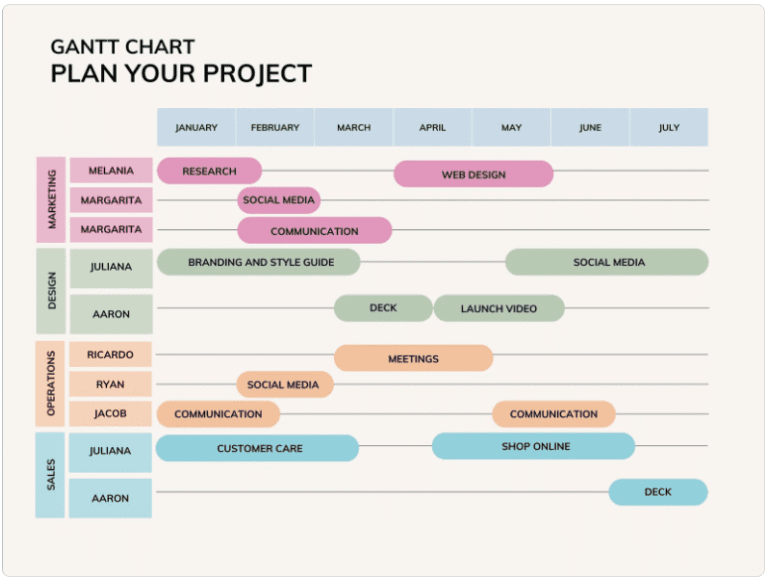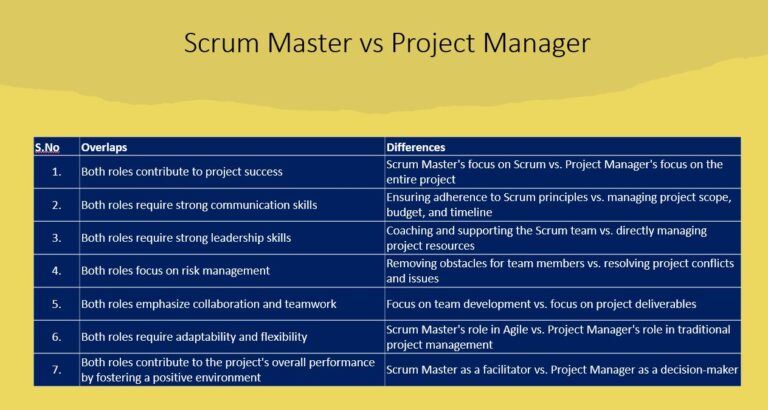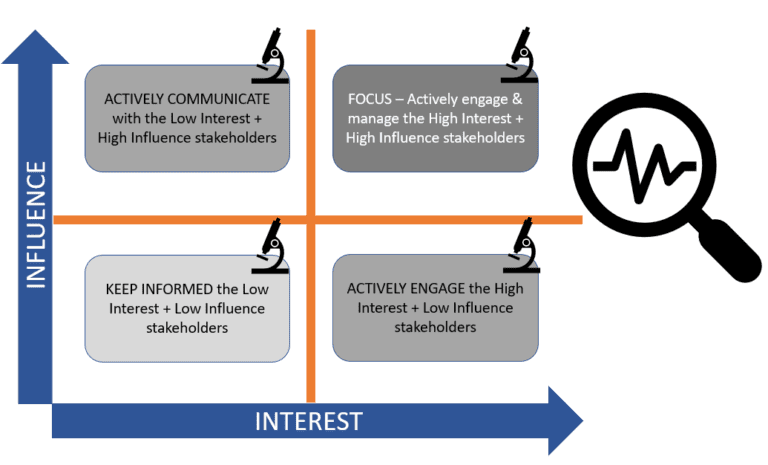Project Management Fundamentals – A Complete ‘How To’ Guide [July 2023]

Project management is an essential function in any organization. It involves planning, organizing, and executing projects to meet specific objectives within a set timeframe and budget. In today’s fast-changing business environment, effective project management is critical to the success of any business.
In this article about Project Management Fundamentals, we will explore the basics of project management and how they can be applied to any project. We will cover the importance of project management, what project management is, and project management frameworks. We will also discuss the project management process and how it can be applied to projects in 2023.
Why Learn About Project Management Fundamentals?
Effective project management is essential to the success of any business. Project management provides a structured approach to planning, organizing, and executing projects. It ensures that projects are completed within a set timeframe and budget while meeting specific objectives.
Project management also helps to minimize project risks by identifying potential issues and developing strategies to mitigate them. It also promotes collaboration among project team members, ensuring everyone works towards a common goal.
What is Project Management?
Project management is the application of processes, methods, skills, knowledge, and experience to achieve specific project objectives. It involves planning, executing, monitoring, controlling, and closing projects. Project management aims to ensure that projects are completed within the constraints of scope, time, and budget.

Project management frameworks:
Project management frameworks provide a standardized approach to project management. They define the processes, procedures, and best practices for managing projects. There are several project management frameworks, including Agile, Waterfall, and Hybrid.
Agile project management is an iterative approach that delivers projects in small increments. It is ideal for projects that are complex and require frequent changes.
Waterfall project management is a sequential approach that involves completing one phase of a project before moving on to the next. It is ideal for projects with a well-defined scope requiring little to no changes.
Hybrid project management combines elements of both Agile and Waterfall project management. It provides a flexible approach to project management, allowing for project management tools and teams to adapt to changing project requirements.
Project Initiation
Project initiation is the first phase of the project management process, where the project’s feasibility and viability are evaluated. It involves defining the project’s objectives, identifying stakeholders, assessing project risks, and creating a business case for the project. This phase helps program management to ensure that the project aligns with the organization’s goals, is feasible, and has the necessary resources to succeed. It is a crucial phase that lays the foundation for the project’s success and sets the stage for the subsequent phases of project management.
Defining the project
Defining the project is an essential component of project initiation, as it helps to establish a clear understanding of the project’s scope, goals, and deliverables. By defining the project, project managers can develop a comprehensive project plan and ensure that everyone involved in the project has a shared understanding of what the project will accomplish.
Creating the project charter
Creating a project charter is a fundamental step in project initiation that provides a roadmap for the project’s success. The project charter outlines the project’s scope, objectives, stakeholders, and timelines, enabling project managers to develop a realistic project plan that considers all necessary resources and requirements.
Conducting feasibility studies
Conducting feasibility studies is a critical aspect of project initiation that assesses the project’s technical, economic, and organizational feasibility. By conducting feasibility studies, project managers can identify potential risks and issues that may arise during the project’s implementation, enabling them to develop strategies to mitigate these risks and ensure the project’s success.
Setting project objectives
Setting project objectives is a crucial step in project initiation that defines the project’s goals and success criteria. By setting project objectives, project managers can create a clear roadmap for the project’s success, ensuring that everyone involved in the project has a shared understanding of what the project will achieve.
Identifying project stakeholders
Identifying project stakeholders is a crucial aspect of project initiation that involves identifying individuals and groups who may be affected by the project’s outcome. By identifying project stakeholders, project managers can develop strategies to address their needs and expectations, ensuring that the project aligns with the organization’s goals and stakeholders’ needs.
Project Planning

Project planning phase is a phase in project management that involves defining the project’s scope, objectives, deliverables, timelines, and resource requirements. It serves as a blueprint for the project team to execute the project successfully.
Creating the project plan
This involves creating a comprehensive plan that outlines the project’s objectives, scope, deliverables, and timelines. It serves as a guide for the project team to execute the project successfully.
Defining the scope of the project
Defining the scope of the project is important to identify the project’s boundaries, objectives, and deliverables. This helps with project constraints in ensuring that everyone involved in the project is clear about what is expected of them.
Creating a work breakdown structure (WBS)
This involves breaking down the project’s deliverables into smaller, manageable tasks to ensure that everyone involved in the project understands their tasks and responsibilities. The WBS helps in monitoring progress against the project plan.
Creating a project schedule

This involves creating a schedule that outlines the project’s timeline, milestones, and deadlines. The project schedule serves as a tool to monitor progress and project costs and ensure that the project is completed within the specified timeline.
Resource allocation and management
This involves identifying and allocating the necessary resources required for the project’s successful completion. Resource allocation and cost management will ensure that the project is completed within the specified timeline and budget.
Project Execution
After project planning is completed, the next phase is project execution phase. This is where the project plan is put into action, and the actual work of the project is carried out. The project team is mobilized, and the resources are allocated to accomplish the project objectives.
Project team management
Project team management is critical during project execution as it ensures that the project team members are working together effectively and efficiently. This involves monitoring team performance, providing feedback, and resolving conflicts. Project managers must ensure that team members are motivated, focused, and working collaboratively towards achieving project objectives.
Project communication management
Effective communication is key to project success. Project communication management involves creating a communication plan, ensuring that information flows smoothly, and stakeholders are informed about project progress. Project managers must ensure that project stakeholders are kept up to date, and any issues or risks are addressed in a timely and effective manner.
Risk management
Risk management is a crucial aspect of project execution. It involves identifying, assessing, and mitigating risks that can impact project success. Project managers must be proactive in identifying and addressing risks that can derail the project, and have contingency plans in place to mitigate any potential risks.
Quality management

Quality management is the process of ensuring that the project meets or exceeds the stakeholders’ expectations. Project managers must ensure that the project is meeting the specified quality standards and that quality is maintained throughout the project. This involves regular quality checks and ensuring that the project deliverables meet the required quality standards.
Project Monitoring and Control
Project monitoring and control is a phase in project management that takes place throughout the project lifecycle. It involves tracking project progress, identifying any issues, and making necessary adjustments to ensure that the project remains on track.
Performance tracking and reporting
Performance tracking and reporting involves measuring the progress of the project against the project plan. Project managers must ensure that the project is on schedule, within budget, and meeting the quality standards. Regular status reports should be created and shared with stakeholders to keep them informed of the project progress.
Change management
Change management is the process of managing changes to the project scope, timelines, or resources. Project managers must ensure that any changes are assessed and approved by the project sponsor and that all stakeholders are informed of the changes. The impact of changes on project timelines, budget, and resources must be carefully evaluated to ensure that the project remains on track.
Issue management
Issue management involves identifying and resolving issues that arise during the project. Project managers must ensure that all issues are documented, tracked, and resolved in a timely and effective manner. It is crucial to address issues promptly to prevent them from turning into bigger problems that can impact the project’s success.
Project risk management
Project risk management is an ongoing process that involves identifying, assessing, and mitigating risks that can impact the project’s success. Project managers must have a risk management plan in place to ensure that risks are identified and addressed promptly. This involves regularly reviewing the risk management plan and making necessary adjustments to ensure that the project is well-positioned to overcome potential risks.
Project Closure

Project closure is the final phase in the project management life cycle that takes place after the project has been completed. It involves wrapping up all project activities and delivering the final product to the customer or stakeholder.
Project deliverables and acceptance
Project deliverables are the tangible results of the project, which can be a product, service, or document. During project closure, project managers must ensure that all deliverables have been completed and meet the requirements and standards set out in the project plan. Once the deliverables have been completed, project managers must obtain acceptance from the customer or stakeholder.
Lessons learned
Lessons learned are valuable insights that can be gained from the project experience. During project closure, project managers should conduct a post-project review to identify successes, challenges, and areas for improvement. Lessons learned should be documented and shared with the project team and stakeholders to improve future project performance.
Project evaluation
Project evaluation involves assessing the project’s success and determining whether it met the objectives and goals set by project initiation document and out in the project plan. Project managers should review the project plan, budget, and timelines to determine if they were met. Additionally, project managers should obtain feedback from stakeholders to determine if their needs and expectations were met.
Project archive
Project archive involves storing and preserving all project documentation and deliverables for future reference. Project managers should ensure that all project documentation, including the project plan, budget, schedules, and lessons learned, are stored in a centralized location. This allows future project managers to learn from past experiences and leverage best practices to improve future project performance.
Project Management Software

In today’s technological world, project management software has become a critical component of managing projects effectively. Project management software helps project managers and teams organize and manage their work, streamline communication, manage projects, and ensure that projects are completed on time and within budget.
Selecting the right project management software is crucial to the success of your project. It’s important to evaluate your specific project management needs and choose a software that best meets those needs. Some popular project management software options include Trello, Asana, and Basecamp, among others.
Features of project management software can vary widely, but some common features include project planning tools, task management, time tracking, and team collaboration features. It’s important to consider the specific needs of your project and team when selecting software.
Benefits of project management software include improved team communication and collaboration, enhanced organization and task management, and improved project visibility and accountability. By utilizing project management software, project managers and teams can ensure that projects are completed efficiently and effectively.
Best Practices in Project Management
Successful project management requires careful planning, effective communication, and strong leadership skills. To help manage projects effectively ensure project success, there are several best practices that project managers should follow.
Tips for successful project management include establishing clear project goals and objectives, communicating effectively with team members, tracking progress regularly, and being flexible and adaptable to change. Additionally, it’s important to establish a culture of accountability and to encourage open communication among team members.
Common project management mistakes to avoid include failing to establish clear project goals, poor communication with team members, failing to manage project risks effectively, and failing to establish a realistic, project completion schedule.
Industry standards and guidelines, such as those established by the Project Management body like Project Management Institute (PMI), can also provide valuable guidance for project managers. Staying up to date with project management trends and developments can also help project managers stay ahead of the curve and effectively manage their projects. In addition to Project management fundamentals training, you could also learn the basics of Portfolio management.
Conclusion
In conclusion, project management fundamentals are essential for the success of any project. From project initiation to project closure, effective project management requires careful planning, strong leadership, and effective communication.
By utilizing project management software and following best practices, project managers can help ensure project success and achieve their project goals. Ongoing professional development and staying up to date with industry standards and trends is also critical to the success of any successful project manager.
AI Writers: Copymatic, Quillbot, Peppertype, Jasper AI (pricing) & more
Careers: Managing managers
Work From Home tools: Jabra
You can also follow me here as well.





